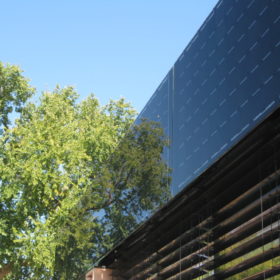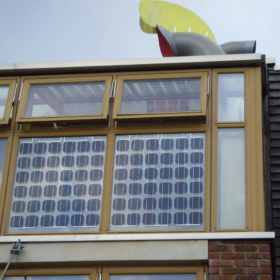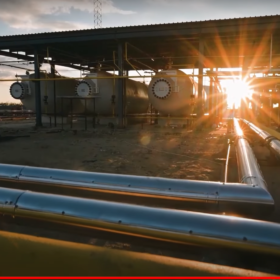Raising crops in PV facades
An international research group has analyzed the visual impact of PV facades on buildings which include crop cultivation. Architects, PV specialists and farmers were surveyed and the results showed broad acceptance of such projects.
Bridging the gap between battery and supercapacitor
By engineering the structure of a hard carbon electrode, scientists at the CIC energIGUNE research center have created an ‘ultrafast battery’ which has been shown to combine the energy density of a lithium device with the fast discharge times normally associated with supercapacitors.
The long read: Go big, go with the flow
While lithium batteries have taken center stage for energy storage, vanadium redox flow batteries could gain considerable traction in 2020. In previous years, vanadium battery installations around the world have done little more than provide proof of concept and a test bed for manufacturers, argues David Gillam from Mastermines. He looks at what may have changed since then and why a surge in batteries utilizing vanadium may be closer than many believe, with China taking the lead.
Healing the cracks for a more stable perovskite
Scientists in the United States have demonstrated simple methods for ‘healing’ the cracks that form in perovskite solar cells. While it is far from clear how the approach could be applied commercially, the work suggests possibilities for maintaining the performance of perovskite cells in long-term operation.
Energy density advances and faster charging would unlock EV revolution
With electric vehicles making up only 3% of the global car market last year, analyst WoodMac says battery packs need to be cheaper and lighter and range anxiety must be addressed to change the habits of drivers.
Recycling heat for a ‘385% efficient’ solar desalinator
MIT scientists have developed a solar desalinator which transports heat from the sun through a ten-stage process of evaporation and condensation. The group estimates a $100 device employing their innovation could provide the daily drinking water needs of a family.
MIT researchers say PV innovations should be deployed in niche markets first
Solar module manufacturers should begin testing new technologies in higher-value niche markets, say scientists at the U.S. institution. For example, bringing perovskite technology directly to the mainstream market remains prohibitive in terms of initial investment but segments such as building-integrated PV or microelectronics devices may offer better routes to commercial maturity.
The best battery for grid level energy storage
A new paper published by researchers at China’s Tianjin University examines the state of the art in grid level energy storage, outlining the pros and cons of various battery technologies being deployed on grids around the world, and remaining challenges that could be overcome if research is pushed in the right direction.
Raising the efficiency of polycrystalline cells with new luminescent EVA film
Chinese researchers have developed a pure EVA film, which they claim can enhance the conversion efficiency of conventional crystalline solar cells by around 0.50%. The film is able to convert UV light into strong visible light.
Green hydrogen costs projected to decrease by up to 60% by 2030
A new report from Hydrogen Council predicts that the cost of renewable hydrogen production will fall drastically by up to 60% over the coming decade due to the declining costs of renewable electricity generation and the scaling up of electrolyzer manufacturing. Thanks to its optimal renewable resources, Australia will be among the countries most favorably placed to contribute to the development of the hydrogen economy.















